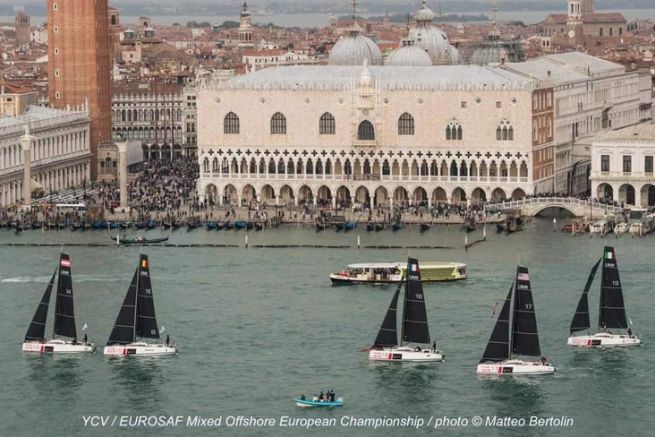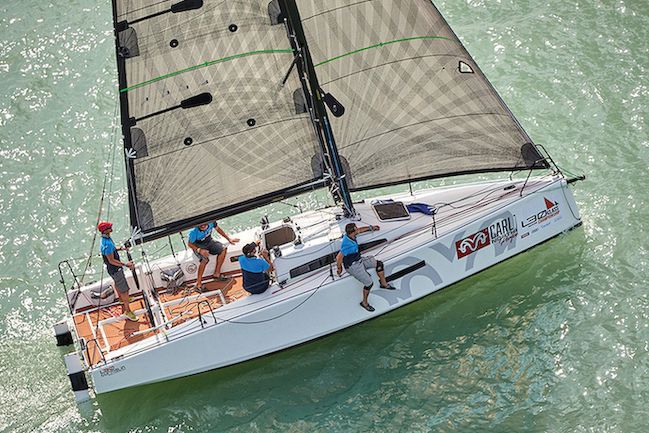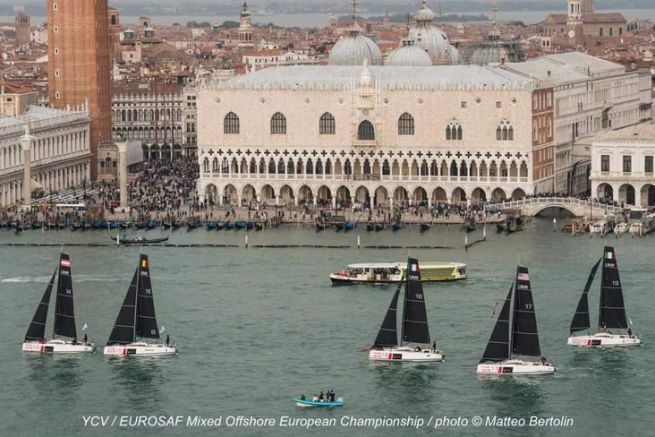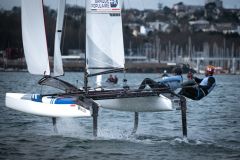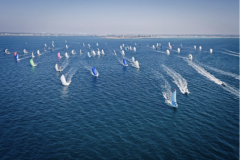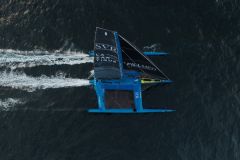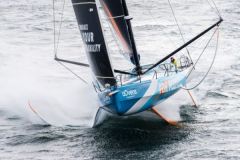When World Sailing chose the L30 The Ukrainian boat, as the official one-design for ocean racing, surprised many people. Indeed, narrow and ballasted, it corresponds more to Anglo-Saxon guns than to French ocean racing yachts.
On the occasion of the 2019 Paris Boat Show, we visited this atypical and interesting sailboat.. . To go beyond possible prejudices, we interviewed Sophie Faguet who knows the L30 well. The young skipper from Normandy has a great deal of experience in light sailing (420), in sports keelboats, in match racing, she has also sailed around France and 4 Solitaire du Figaro.
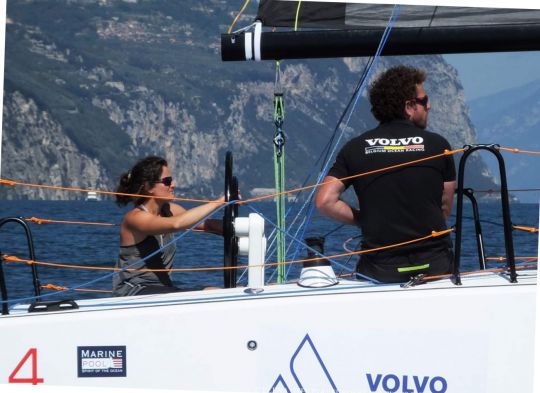
What are you doing browsing L30??
I'm skippered in pairs with the Belgian Jonas Gerckens. We are preparing for the 2024 Olympics, which for the first time will open up to an ocean racing event. For the moment, the L30 has been chosen by World Sailing as the official support for a European Ocean Racing Championship in mixed double-handed sailing and it was in this context that I discovered the L30.
My first experience aboard the L30 was during training and regattas, with a crew of 4 people, on Lake Garda in Italy. We had some calm, but also up to 20 knots of wind, but the water remained relatively flat. We finished second in that first competition, which was a kind of takeover.
The goal was to be ready for the mixed doubles event from Venice to Trieste in October 2019. During this first event of the championship and in very varied conditions, we finish second.
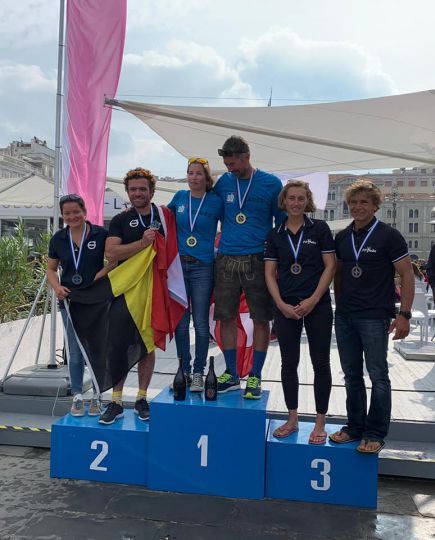
Can you give us your take on the nautical qualities of L30??
Jonas and I were pleasantly surprised by this narrow, ballasted keelboat, which behaves a bit like a dinghy. In the short time we had fun. The sailing game is complete, and I'm not used to sailing with a gennaker, so I thought it was very nice. Depending on the angle and strength of the wind, you can switch quickly from genoa to gennaker, which spices up the long tacks.
In light airs, helped by its limited wetted surface, the L30 starts quite fast. In light winds, it is hyper sensitive to weight distribution. In mixed doubles, the helmsman and trimmer stations would be quickly switched over to suit the recall requirements, I must say I weigh 60 kg and Jonas 85 kg.
We also sailed with more sea and wind. In the Adriatic Sea, we encountered up to 30 knots and short waves of 1.50 m typical of the Mediterranean. The L30 passes the waves well, without slowing down too much. However, we were sailing with a very steep angle of heel because we were lightly loaded. Thus, the L30 requires a lot of work to regulate the mainsail, which is quite large and equipped with a horn.
The sailing game, which is quite complete, offers a lot of possibilities and I find it very interesting. On the Croatian coast, we were experiencing a very random wind in strength and direction, so we were changing sails a lot, which meant we didn't have to stay stuck on the water.
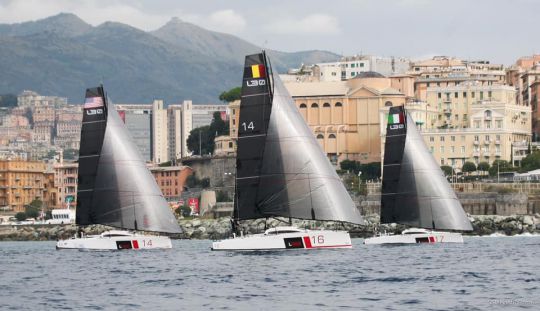
How does this hull behave, more oriented ballast stability than stability of forme??
We haven't done a lot of heavy reaching in the breeze, so we're still lacking experience. During the event, there was a long port/reaching stretch between Italy and Croatia, but we were a little further offshore than the others so there was no immediate comparison.
If the L30 doesn't have an impressive shape stability, thanks to the ballast ratio we can still luff it high enough and when it goes to the luff, we can retrieve it rather easily. Even if reaching won't necessarily be the strong point of this boat, as a one-design boat we all have the same support and what counts is getting the most out of it.
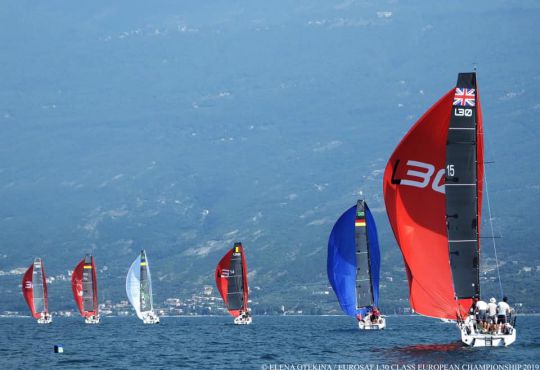
Two steering wheels on a 30'?! Can you give us your avis??
As far as I'm concerned, steering wheels take time to adjust. With a mechanical transmission the reaction time is necessarily longer than with a tiller. Surprisingly, it's not my favorite thing, but we're adjusting.
The sheeting winches are positioned close to the bars, but they are still too far away to be used for steering. It's a shame, because the trimmer has to be at the stern and turn his back to the boat to winch. So as much as possible, we send the sheets back to the roof winches, in any case the sheet winches are a little undersized.
Concerning the mechanical steering line system, there is not too much play in the whole. But the lifting rudders move a little in their housings, as the moss that holds them down tends to settle after two days. Moreover, the rudders no longer hold up, so the system quickly loses interest.
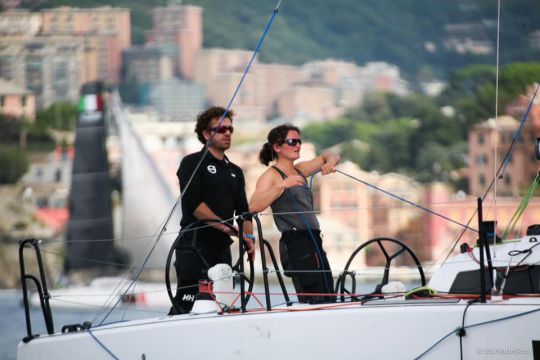
And finally is the L30 wet in mer??
Sailing in the breeze, but especially in the short chop I found the L30 very dry, I was surprised, even at the recall, you are not wet. She has a very high freeboard and as she doesn't tend to dive her bow underwater, we're sailing very dry.
